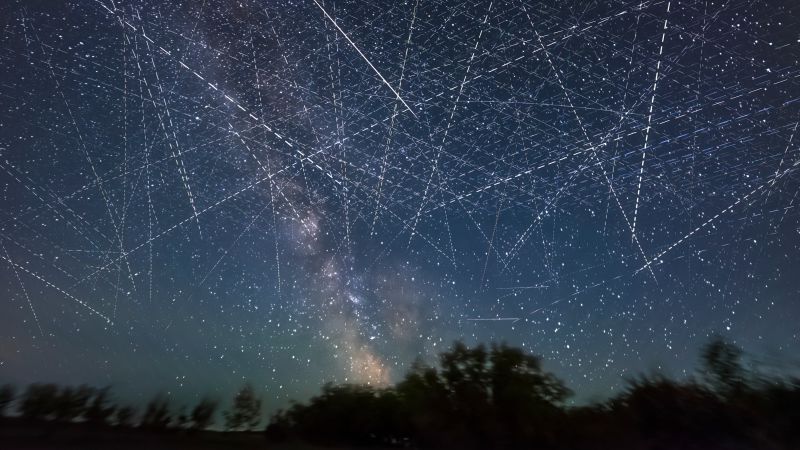The issue of space debris has reached critical levels, resulting in growing concerns over the safety of astronauts and satellites navigating the crowded expanse of low Earth orbit. A recent incident illustrated this peril when a fragment of space debris threatened the International Space Station (ISS) in November. Seven astronauts aboard the ISS prepared for a potential emergency as a Russian spacecraft attached to the station initiated a trajectory adjustment to avoid the debris, which posed a risk of passing within 2.5 miles (approximately 4 kilometers) of their location. This incident underscores the increasing frequency of near-miss situations for the ISS since its occupancy began in November 2000 due to escalating risks associated with the rise in orbiting objects.
Space debris poses a significant threat not only to the ISS and its crew but also to the numerous satellites that form the backbone of modern technologies such as GPS systems, telecommunications, and weather monitoring. Dr. Vishnu Reddy, a planetary sciences professor at the University of Arizona, highlighted the exponential increase in the number of objects in space launched in recent years, heightening fears that conditions will spiral into a chaotic scenario known as Kessler Syndrome.
Kessler Syndrome, named for American astrophysicist Donald Kessler, describes a dire scenario where space debris generates a chain reaction of collisions. As one fragment collides with another object, it produces more debris, which can in turn collide with yet more objects, leading to an increasingly congested orbit filled with detritus. This cascade can make space travel perilous and could effectively halt any form of satellite operation or exploration.
Current assessments of the potential risks associated with space debris vary among researchers. Nevertheless, a general consensus is emerging that emphasizes the gravity of the threat posed by the rising number of objects in orbit. Since 1957, over 650 incidents involving break-ups, explosions, and collisions resulting in debris have been registered, a figure reported by the European Space Agency. Notably, events such as satellite collisions and nation-state missile tests have exacerbated the debris problem, creating thousands of pieces of traceable fragments. For instance, a 2021 Russian missile test against one of its own satellites resulted in over 1,500 detectable pieces of debris.
With satellite operators receiving numerous collision alerts daily, the difficulty of tracking these objects is compounded by the limitations of current tracking technology. Most tracking efforts focus on objects larger than a tennis ball, rendering smaller debris, which can still inflict catastrophic damage, largely unmonitored. The speeds at which these objects travel imply that even a minuscule particle can breach the structural integrity of a spacecraft.
Experts emphasize that low-Earth orbit is the zone most susceptible to the consequences of a Kessler Syndrome. This heavily trafficked area accommodates active satellites, crewed space stations, and extensive constellations aimed at providing global internet connectivity. Should chain reactions of explosions manifest in this region, astronauts’ safety would be endangered, and the functionality of numerous satellites could essentially cease.
Amidst these challenges, some glimmers of hope have arisen. Scientific advancements propose potential cleanup technologies and methods aimed at removing debris from orbit. An example is the Drag Augmentation Deorbiting Subsystem developed by the European Space Agency, which utilizes a braking sail to enhance atmospheric drag. However, such technologies remain costly and in developmental stages, raising questions about who would fund their implementation.
Regulatory frameworks also require substantial improvement to mitigate the proliferation of space debris. While international discussions such as the United Nations’ “Pact for the Future” signal a collective intention to address space traffic and debris regulations, the lack of enforcement mechanisms makes it difficult to ensure compliance. Individual nations, particularly the United States, are encouraged to take initiative in creating policies that mandate responsible practices for space companies and stakeholders, a perspective endorsed by experts like Dr. Nilton Renno and Dr. Vishnu Reddy.
As satellite usage continues to expand, so does the urgency of addressing the space debris crisis. Much like the ecological challenges faced on Earth, the ramifications of unregulated space activities threaten long-term sustainability. Preventative measures, including cleanup technologies and international cooperation, will be pivotal in shaping the future of Earth’s orbital environment and ensuring the continued safety and viability of space exploration.



